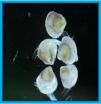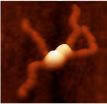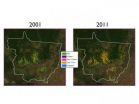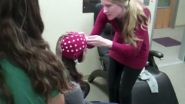(Press-News.org) The Academy of Radiology Research reported in the current issue of Nature Biotechnology (Volume 32, Issue 6) that patent output from the National Institutes of Health (NIH) is vital to understanding which various areas of science are contributing most to America's innovation economy. The report, "Patents as Proxies: NIH Hubs of Innovation," confirms an increased economic value of NIH patents as compared to private sector patents, as well as meaningful differences in the rate and quality of invention across different research and development (R&D) investments.
"The Academy of Radiology Research undertook this analysis to address a need from the Office of Management and Budget (OMB) and the Office of Science and Technology Policy (OSTP) to develop econometric evidence to better guide federal R&D budgets," said Michael Kalutkiewicz, co-author of the report and senior director for government affairs at the Academy of Radiology Research. "Looking at the NIH as a whole, the results demonstrate that the quality of NIH's scientific discoveries can't be replicated by the private sector alone. However, when we look across the agency, the data also reveal meaningful differences in patent productivity and downstream economic impact between various areas of NIH-funded research."
Patents are widely-accepted as being vital to growing America's innovation economy, and the U.S. Congress and the White House have been taking steps to strengthen America's patent system. There is also a nascent movement, fueled by both the congress and the administration, to improve how the impacts of federal spending are measured in an effort to guide R&D investments.
According to the report, patents generated by NIH-funded research are of particularly high quality and provide a downstream economic footprint that exceeds comparable research funded by the private sector. On average, NIH patents provide the intellectual foundation for 8 additional downstream patents, while biotechnology patents created by private sector entities only spur 1.7 future patents over a similar time period.
"The report in Nature Biotechnology provides empirical evidence that NIH-funded discoveries not only fuel a high level of additional R&D activity, but also that the scientific base for the nation's innovation economy would be significantly diminished without publicly-funded research," said Renee Cruea, MPA, Executive Director of the Academy of Radiology Research.
The report also showed that budget size did not correlate to a higher rate of new inventions. The strongest producer of new intellectual property (IP) was the National Institute for Biomedical Imaging and Bioengineering (NIBIB), the most recent Institute created by Congress and having one of the smallest operating budgets within NIH. Other strong producers were the National Institute of General Medical Sciences (NIGMS), the National Institute of Dental and Craniofacial Research (NIDCR), the National Institute of Arthritis and Musculoskeletal and Skin Diseases (NIAMS), the National Eye Institute (NEI) and the National Cancer Institute (NCI).
Over the last 10 years, NIBIB researchers have created 16 patents for every $100 million in research dollars, compared to 2.4 patents for every $100 million in NIH funding from other institutes. This equates to a cost of just $6 million for each imaging research patent compared to $39 million for one patent in other areas of research. Since patents lead to higher rates of new technologies, companies and jobs, imaging and bioengineering science results in the greatest economic impact from public research funds.
"The traditional scientific criteria that guide the way that we prioritize investments in medical research are important and time-tested," said Richard Ehman, MD, the report's co-author and president of the Society of Body Computed Tomography and Magnetic Resonance Imaging (SBCTMR). "But rates of invention and related outcome measures deserve to be considered as criteria that can help to identify areas of science – such as in imaging research – that demonstrate a strong return-on-investment."
The metrics examined in this report are receiving more attention from policymakers and other stakeholders, particularly in light of growing calls for the development of better evidenced-based budgeting in federal science programs.
"We in the science community should do more to satisfy the public interest in quantifying the impact of federally-funded medical research," said Cruea. "This study is a step towards evidence-based budgeting that satisfies the dual aim of translation to patient care and downstream economic development."
"This study underscores the far-reaching impact of robust public-private collaboration in biomedical imaging and bioengineering research," said Michael Harsh, vice president and chief technology officer for GE Healthcare. "American medical innovation relies in part on industry R&D coming alongside NIH, NIBIB, academia and clinical researchers to help increase quality, access and affordability in the healthcare space. Industry innovation leaders, like GE Healthcare, see value in this continuing collaboration as we look to bring groundbreaking discoveries to the clinical setting – which ultimately impacts patient care."
Given the importance of hard data to reinforce the value of federal funding to NIH, the Academy is finalizing a follow-on analysis that looks at patent output through a number of additional metrics, such as by mechanism and study section.
INFORMATION:
Nature Biotechnology is a peer-reviewed monthly journal covering the science and business of biotechnology. Published monthly by the Nature Publishing Group, Nature Biotechnology provides new concepts in technology and methodology of relevance to the biological, biomedical, agricultural and environmental sciences as well as covers the commercial, political, ethical, legal, and societal aspects of this research.
About The Academy of Radiology Research
The Academy of Radiology Research is an alliance of 28 professional imaging societies, 37 academic Radiology Departments, 80 patient advocacy groups, and 9 industry partners. Its mission is to raise the profile of imaging research and increase federal investments in that research.
Please click here to full journal article:
http://www.nature.com/nbt/journal/v32/n6/full/nbt.2917.html
The Academy of Radiology Research featured in Nature Biotechnology journal
Study seeks to pinpoint federally funded research and development programs that generate significant economic impact
2014-06-09
ELSE PRESS RELEASES FROM THIS DATE:
NOAA scientists find mosquito control pesticide low risk to juvenile oysters, hard clams
2014-06-09
Four of the most common mosquito pesticides used along the east and Gulf coasts show little risk to juvenile hard clams and oysters, according to a NOAA study.
However, the study, published in the on-line journal Archives of Environmental Contamination and Toxicology, also determined that lower oxygen levels in the water, known as hypoxia, and increased acidification actually increased how toxic some of the pesticides were. Such climate variables should be considered when using these pesticides in the coastal zone, the study concluded.
"What we found is that larval oysters ...
Antiviral therapy may prevent liver cancer in hepatitis B patients
2014-06-09
DETROIT – Researchers have found that antiviral therapy may be successful in preventing hepatitis B virus from developing into the most common form of liver cancer, hepatocellular carcinoma (HCC).
That was the finding of a study published in the May issue of Clinical Gastroenterology and Hepatology. Investigators from Henry Ford Health System in Detroit, Geisinger Health System in Danville, Pa., and Kaiser Permanente in Honolulu, Hawaii and Portland, Ore. participated in the study, along with investigators from the Centers for Disease Control and Prevention in Atlanta. ...
How much fertilizer is too much for the climate?
2014-06-09
EAST LANSING, Mich. — Helping farmers around the globe apply more-precise amounts of nitrogen-based fertilizer can help combat climate change.
In a new study published in this week's Proceedings of the National Academy of Sciences, Michigan State University researchers provide an improved prediction of nitrogen fertilizer's contribution to greenhouse gas emissions from agricultural fields.
The study uses data from around the world to show that emissions of nitrous oxide, a greenhouse gas produced in the soil following nitrogen addition, rise faster than previously expected ...
Coral, human cells linked in death
2014-06-09
SAN DIEGO (June 6, 2014) — Humans and corals are about as different from one another as living creatures get, but a new finding reveals that in one important way, they are more similar than anyone ever realized.
A biologist at San Diego State University has discovered they share the same biomechanical pathway responsible for triggering cellular self-destruction. That might sound scary, but killing off defective cells is essential to keeping an organism healthy.
The finding will help biologists advance their understanding of the early evolution of multicellular life, ...
Researchers recast addiction as a manageable disease
2014-06-09
Neuroscientists agree that abuse of drugs hijacks circuits in the brain that are crucial for decision-making, but society as a whole tends to stigmatize addicted people for lacking self-control. Slowly but steadily, scientists say, they are making important progress in changing the perception of addiction as they identify new therapeutic interventions that could render addiction into the equivalent of a manageable disease like diabetes.
A group of addiction researchers, for one, recently recommended to the Commission on Narcotic Drugs, part of the United Nations Office ...
Protein could put antibiotic-resistant bugs in handcuffs
2014-06-09
DURHAM, N.C. -- Staph infections that become resistant to multiple antibiotics don't happen because the bacteria themselves adapt to the drugs, but because of a kind of genetic parasite they carry called a plasmid that helps its host survive the antibiotics.
Plasmids are rings of bare DNA containing a handful of genes that are essentially freeloaders, borrowing most of what they need to live from their bacterial host. The plasmids copy themselves and go along for the ride when the bacteria divide to copy themselves.
A team from Duke and the University of Sydney in ...
Parent and child must get enough sleep to protect against child obesity
2014-06-09
URBANA, Ill. – Is sleep one of your most important family values? A new University of Illinois study suggests that it should be, reporting that more parental sleep is related to more child sleep, which is related to decreased child obesity.
"Parents should make being well rested a family value and a priority. Sleep routines in a family affect all the members of the household, not just children; we know that parents won't get a good night's sleep unless and until their preschool children are sleeping," said Barbara H. Fiese, director of the U of I's Family Resiliency Center ...
Land quality and deforestation in Mato Grosso, Brazil
2014-06-09
PROVIDENCE, R.I. [Brown University] — The state of Mato Grosso is the epicenter of an agricultural revolution in Brazil. During the last 15 years, expansion of agriculture in the state has helped Brazil become one of the world's top producers of soy, corn, cotton, and other staple crops. Despite the increase in production, the rate at which Amazon forestland in the state was cleared to make room for new farmland slowed significantly in the second half of the last decade.
Much of the credit for slowing deforestation has been given to government policies and intervention, ...
Does 'free will' stem from brain noise?
2014-06-09
VIDEO:
UC Davis researchers found that the pattern of electrical activity in the brain immediately before making a decision can predict the choice made. This video shows how these experiments are...
Click here for more information.
Our ability to make choices — and sometimes mistakes — might arise from random fluctuations in the brain's background electrical noise, according to a recent study from the Center for Mind and Brain at the University of California, Davis.
"How ...
Humanitarian liking on Facebook
2014-06-09
"Liking" a page on the social networking site Facebook is a new form of civic engagement and humanitarian support, so concludes research published in the International Journal of Web Based Communities. According to the paper's authors social motives and an emotional response underpinned users' inclination to like, or follow, a page, rather than their simply seeking information and news.
Petter Bae Brandtzaeg and Ida Maria Haugstveit of Scandinavian research organization SINTEF in Oslo, Norway, surveyed more than 400 Facebook users about their habits on the site and their ...
LAST 30 PRESS RELEASES:
How many insects fly in the sky above the USA?
Could cheese protect your brain health?
Who faces more difficulty recovering from stroke?
Colliding galaxies create the brightest, fastest growing black holes at their center
New BrainHealth research reveals tradeoffs on sleep with cannabis use for chronic pain
Aging-US now on ResearchGate, enhancing visibility for authors and readers
'Molecular glue' stabilizes protein that inhibits development of non-small cell lung cancer
Mount Sinai Health System is recognized in 2025 Chime Digital Health Most Wired survey
From prey to predator: How carnivores spread beneficial fungi
Menopause symptoms may be frequent and have negative effects, according to female endurance athletes
US Congressmembers’ responses on X to mass shooting events differ along party lines
KAIST-UEL team develops “origami” airless wheel to explore lunar caves
Individual genetic differences render some therapies ineffective
Engineering dendritic cells boosts cancer immunotherapy
Sophisticated neuroimaging reveals PTSD in WTC responders is linked to measurable physical changes in brain structure
Health policy experts identify promising strategies for providing health care to homeless people
Study explores role of neutrophils in canine atopic dermatitis
Mayo Clinic researchers develop AI-ECG model to diagnose liver disease earlier
Heavy menstruation common among teenage girls – questionnaire reveals risk of iron deficiency
New study explores why open water swimming feels so powerful for midlife women
In echo of Jurassic Park, mosquitoes capture entire ecosystems in their blood meals
Marty Cooper, Illinois Tech Alumnus and ‘Father of the Cell Phone,’ Receives 2025 Marconi Society Lifetime Achievement Award
How to reduce the risk of lymphedema
NEJM Evidence and CIDRAP announce Public Health Alerts
New fossil study illuminates on the evolutionary success of frogs
Patient-specific human liver model to understand disease mechanisms
Confused by the doctor's questionnaire? U of A study suggests it's common
How do brains stay stable, and when might a dose of flexibility be helpful?
mRNA revitalizes aging immune systems—the liver as a fountain of youth
Rural-urban differences in the prevalence of chronic pain among adult cancer survivors
[Press-News.org] The Academy of Radiology Research featured in Nature Biotechnology journalStudy seeks to pinpoint federally funded research and development programs that generate significant economic impact





